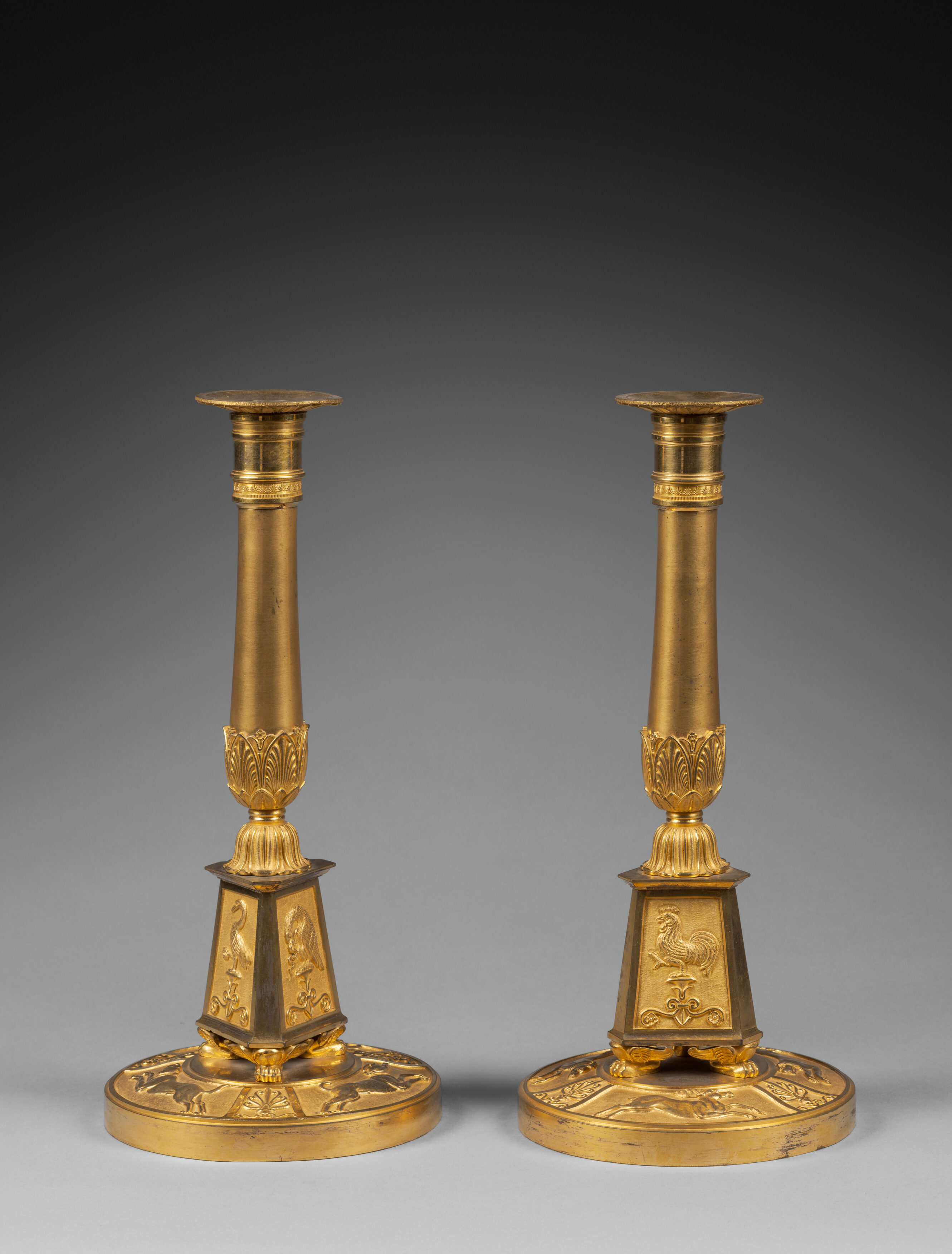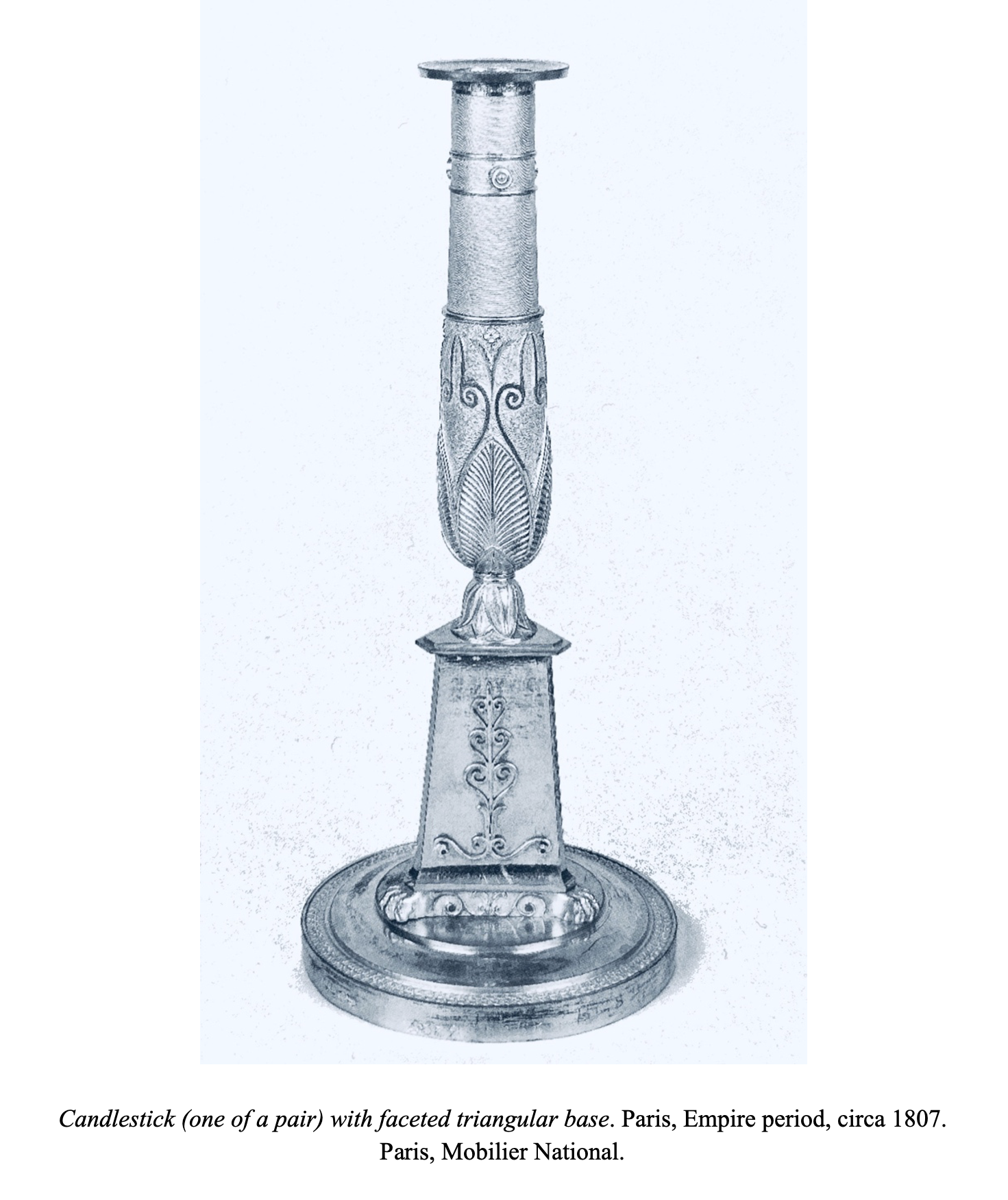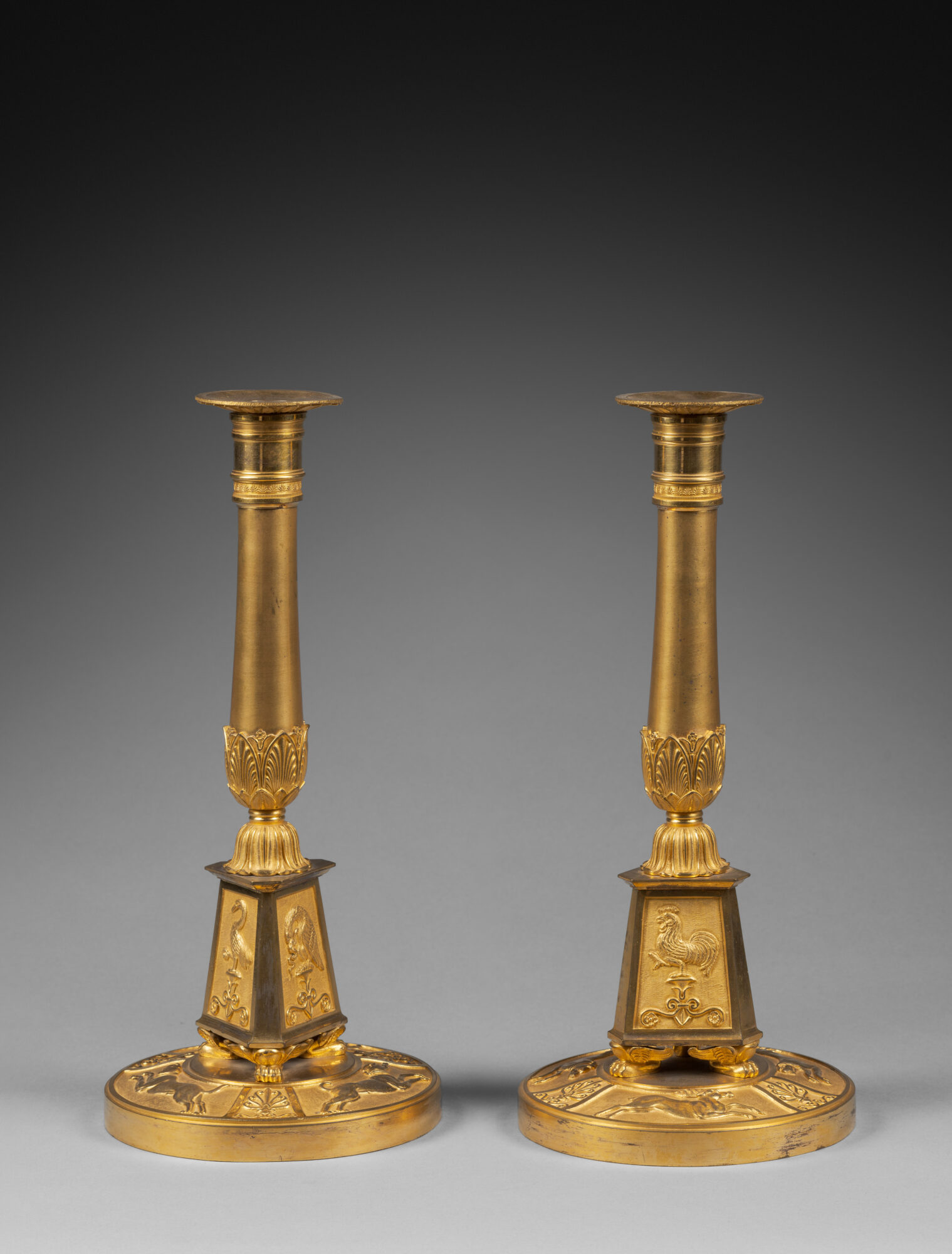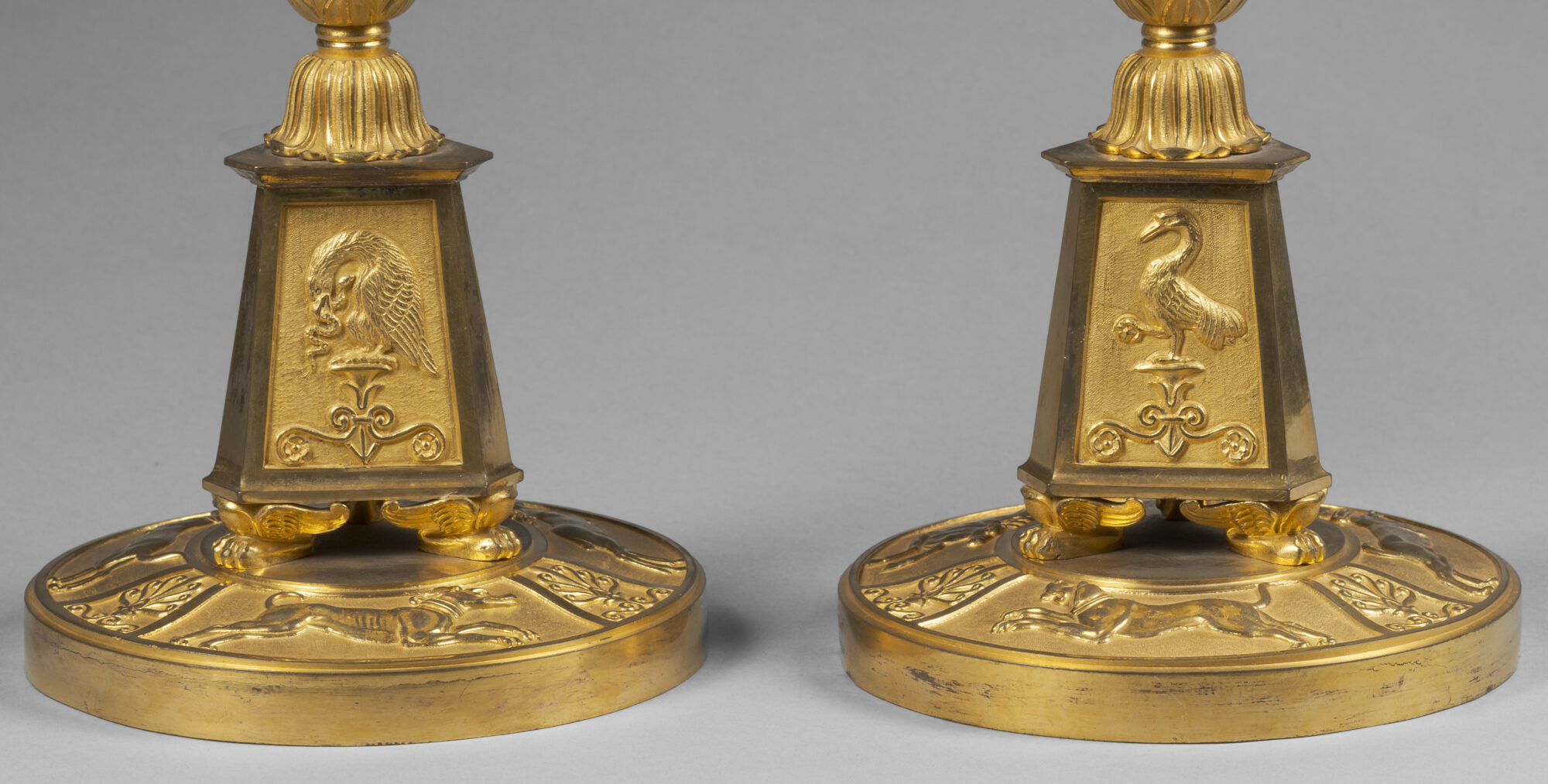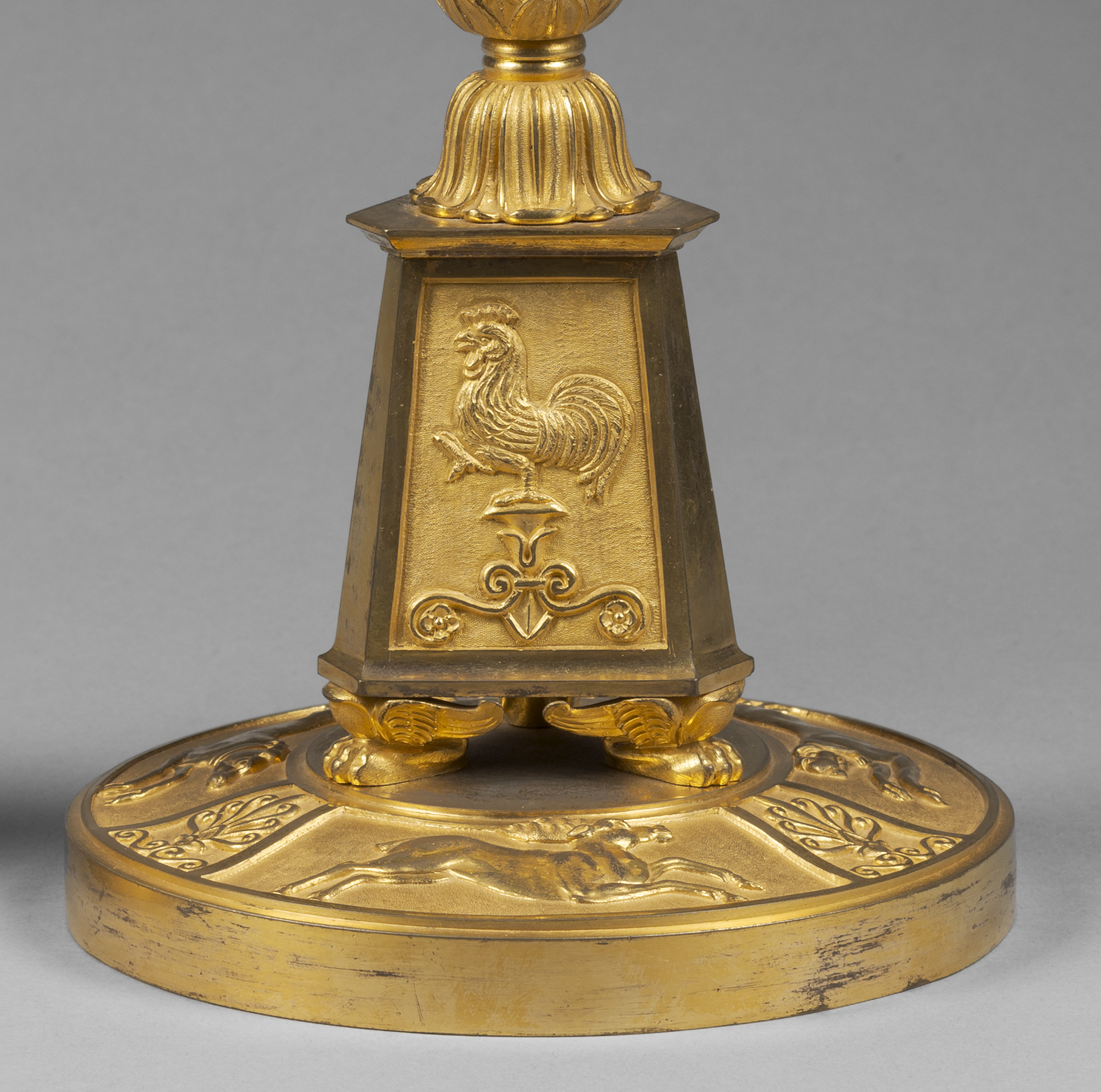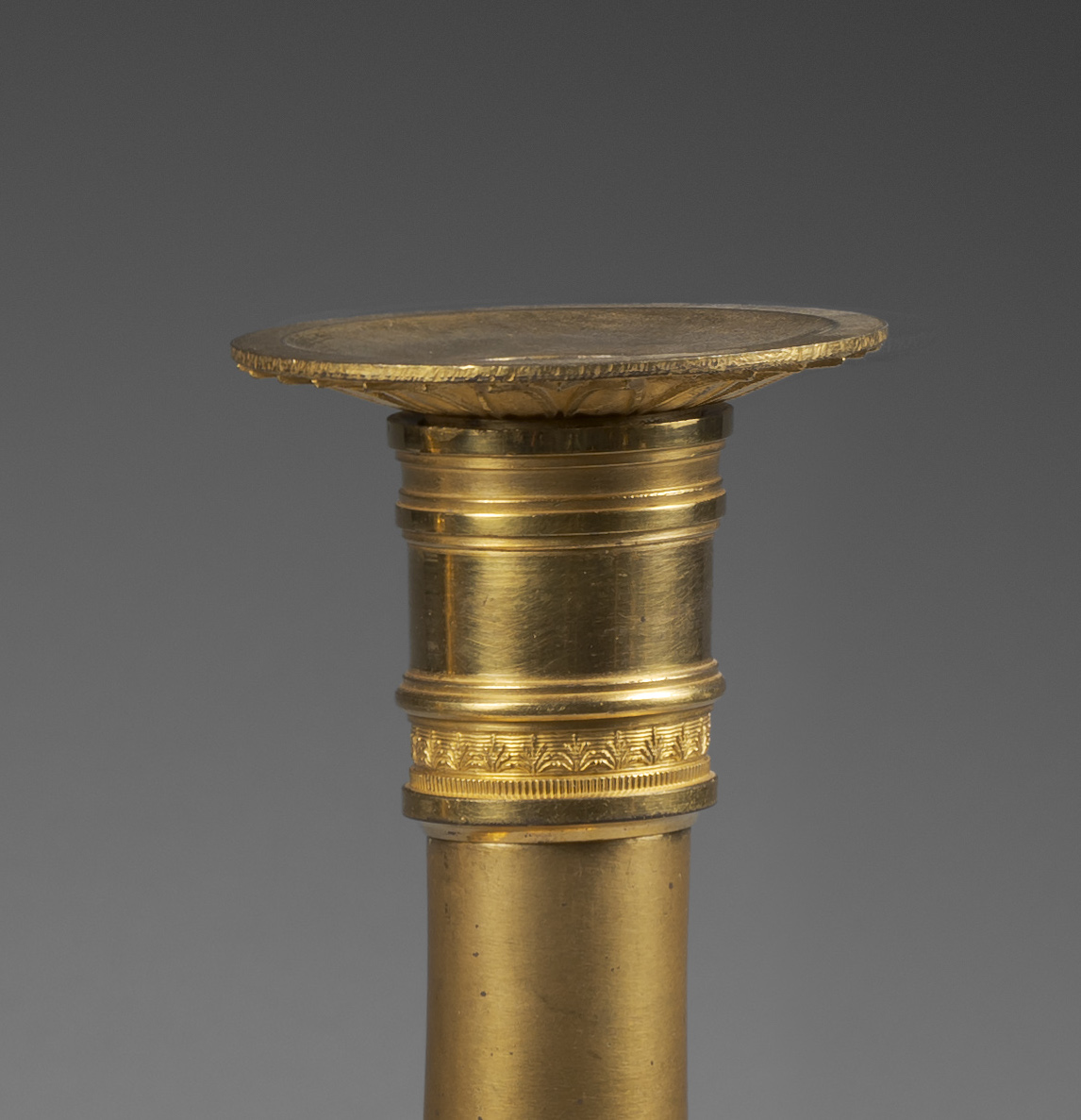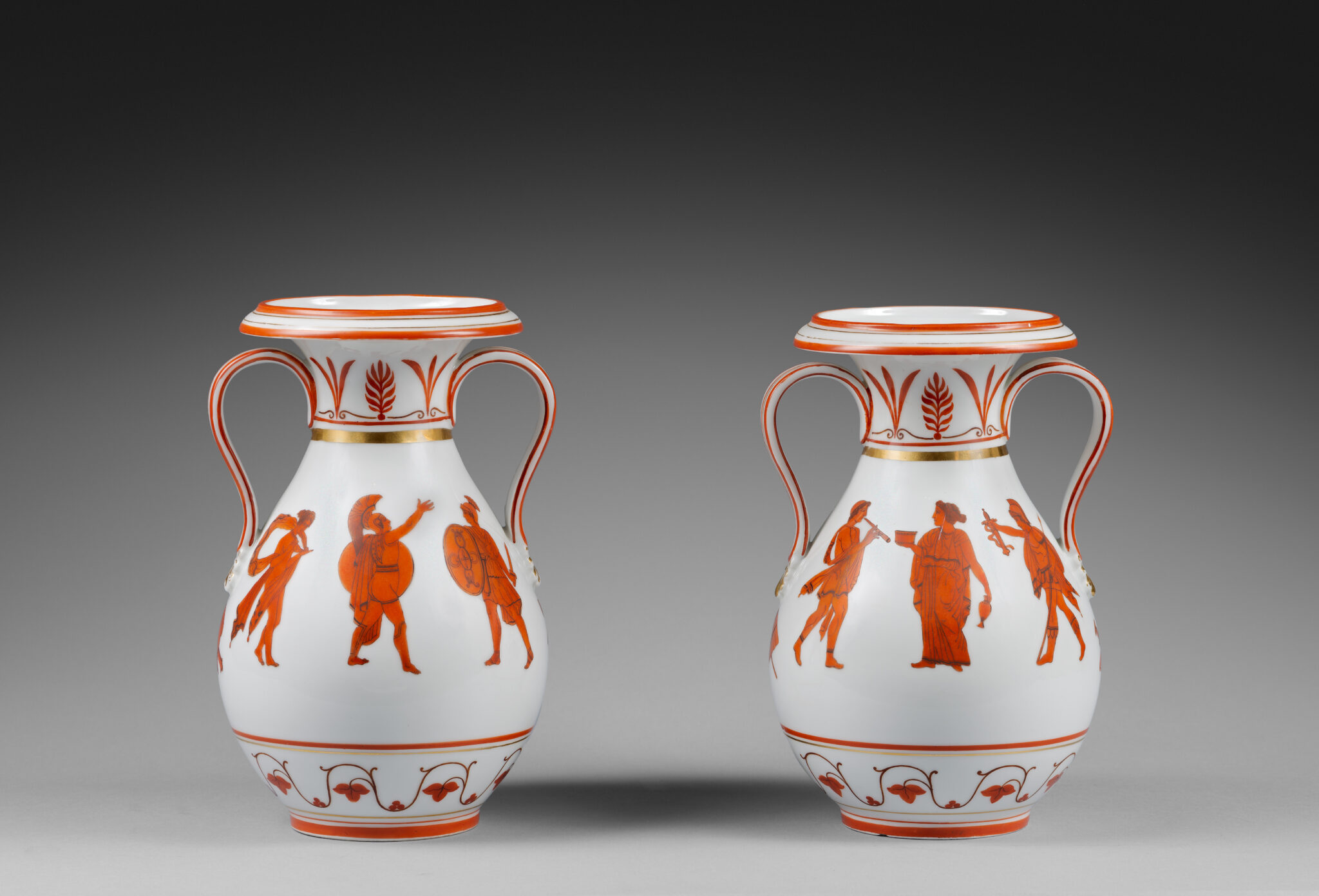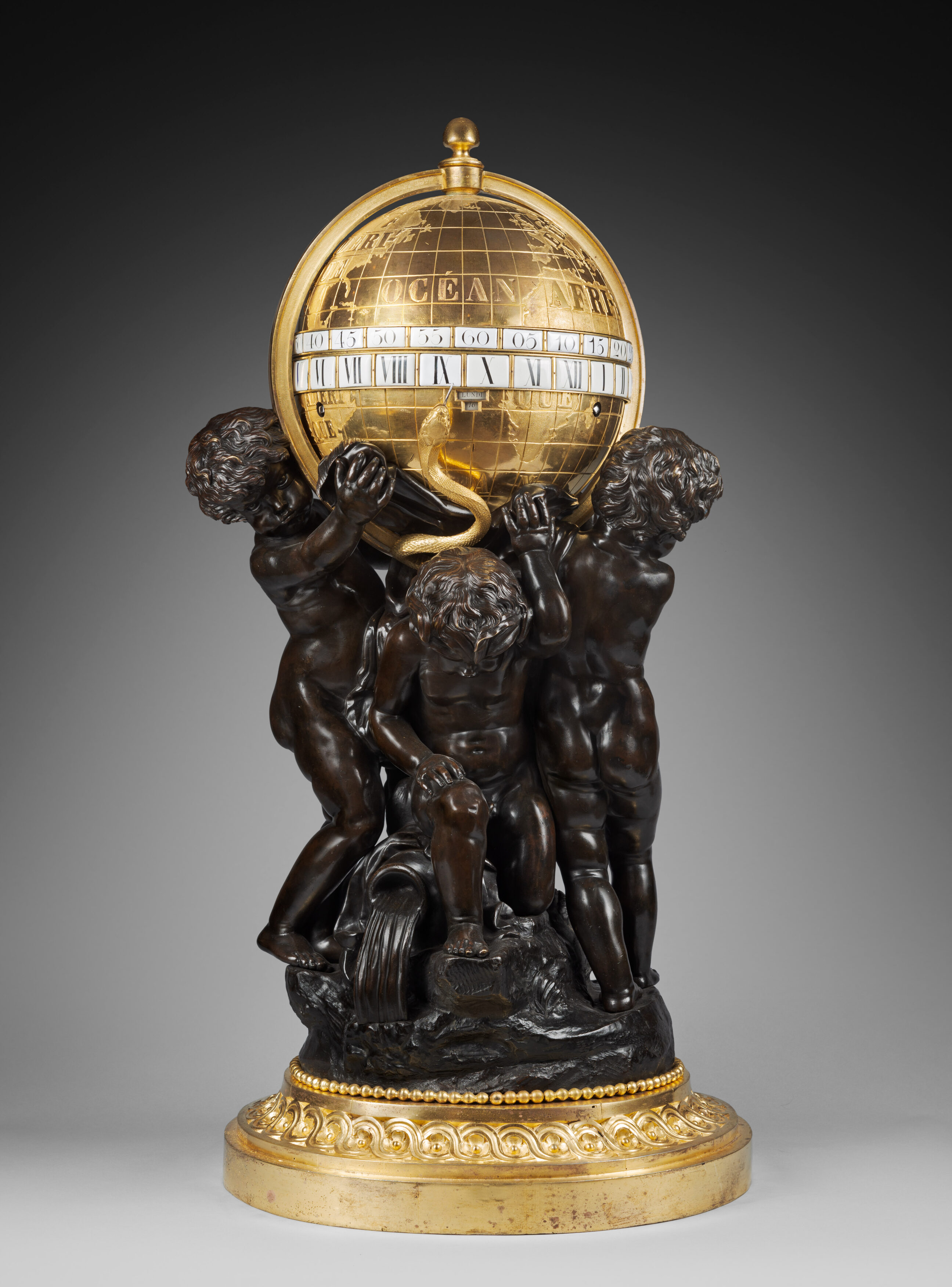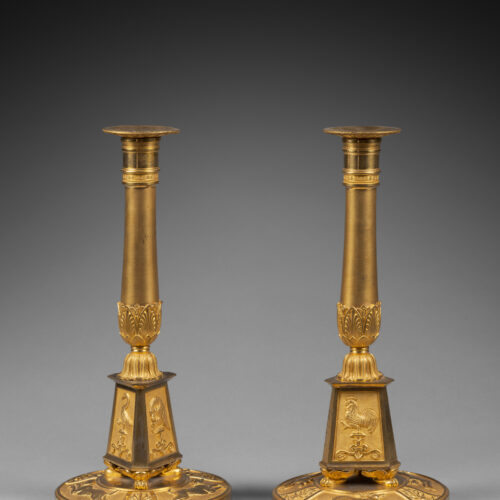Rare Pair of Finely Chased Gilt Bronze Candlesticks with Matte and Burnished Finishing
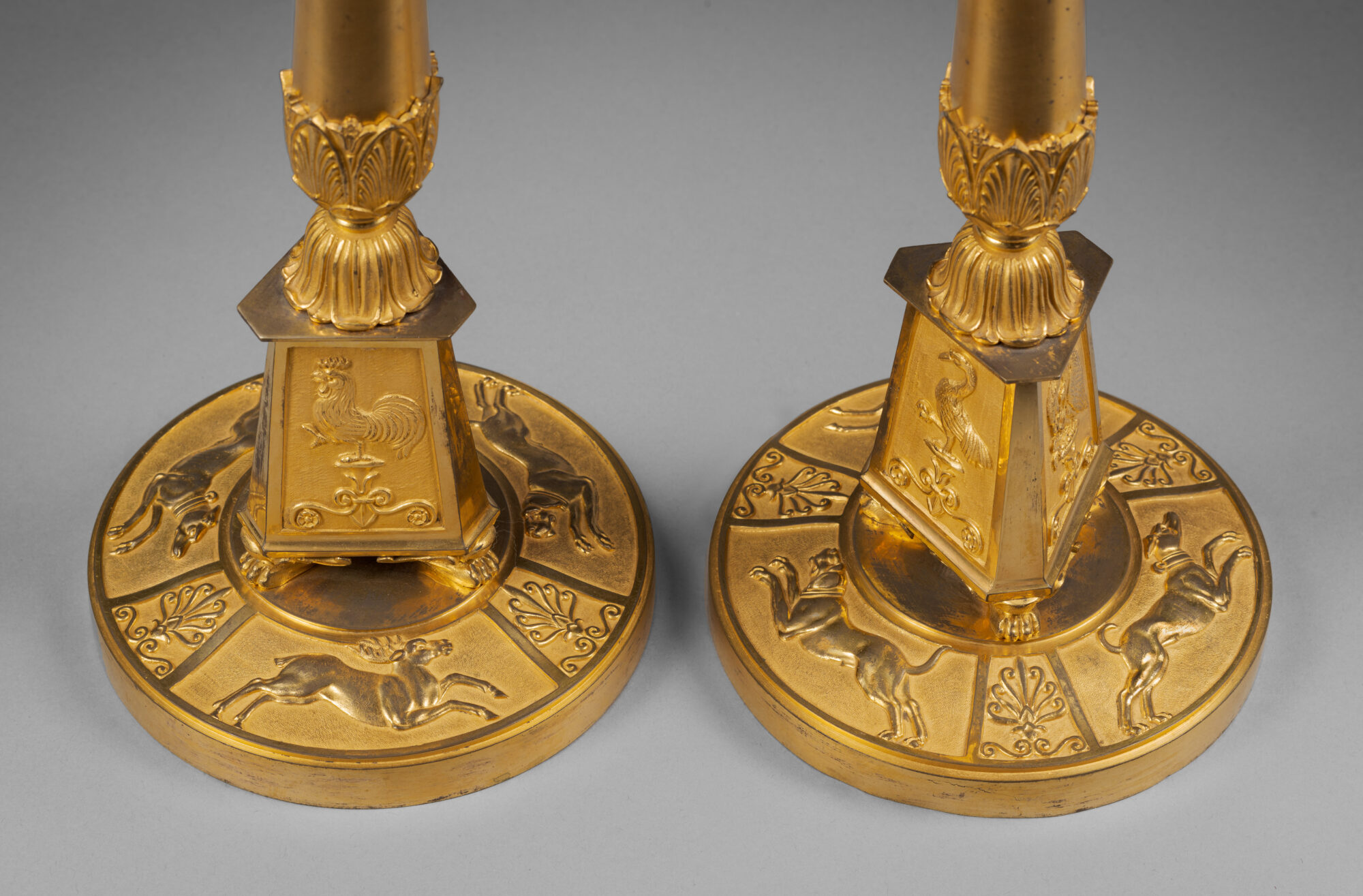
Attributed to bronze-caster Louis-Isidore Choiselat, known as Choiselat-Gallien
Paris, early Restoration period, reign of Charles X, circa 1820
The candlesticks, made of finely chased gilt bronze with matte and burnished finishing, feature baluster stems that emerge from a group of palmettes and waterleaves and are adorned with bands of stylized palmettes that support the nozzle. The stems rest on plain double knops and bases of upright, sloping leaves. The faceted triangular bases are adorned with panels depicting various birds against matted grounds with C-scroll entablatures: an eagle, a wading bird, and a rooster. The bases rest on lion’s paw feet. The circular plinths are decorated with alternating reserves featuring palmettes and running hares, deer, and a lioness, shown against matted grounds.
The remarkable design of this pair of candlesticks, which features faceted triangular bases and ornamental motifs including animals and birds, was clearly created by a talented Parisian bronze caster. Our attribution to Louis-Isidore Choiselat-Gallien is based on a comparison with several works known to have been made by, or attributed to, Choiselat-Gallien. Since each bronze caster was the proprietor of the models he created, one should note that in 1807 the upholsterer Susse delivered a similar pair of candlesticks featuring faceted triangular bases resting on lion’s paw feet to the Imperial Furniture Depository (illustrated in M-F. Dupuy-Baylet, De Bronze et de cristal, Objets d’ameublement XVIIIe-XIXe siècles du Mobilier national, Dijon, 2020, p. 403). The author notes the similarity of that pair of candlesticks with the ones made by Choiselat-Gallien that were delivered in 1822 to the Château de Saint-Cloud (see M-F. Dupuy-Baylet, L’Heure, Le Feu, La Lumière, Les bronzes du Mobilier national 1800-1870, Dijon, 2010, p. 251). These models are similar only as concerns their baluster stems, which are nearly identical, and the author considers that the triangular faceted bases constitute the model’s “originality and lavishness”. It should also be noted that those bases are comparable to those of the present pair of candlesticks. These similar features support our attribution to Choiselat-Gallien.
Louis-Isidore Choiselat (1784 - 1853)
Louis-Isidore Choiselat, known as Choiselat-Gallien, was one of the most important Parisian bronze casters of the first half of the 19th century. Active as of the final years of the Empire period, he established the Maison Choiselat-Gallien and was its director from 1813 to 1847. In addition to being a bronze caster, he was a goldsmith, master founder, chaser, and gilder. Choiselat-Gallien settled in Paris around 1809 and began working in the workshop of Matthieu Gallien, a maker of bronze pieces. The master soon recognized the talent of his young apprentice and arranged for him to marry his eldest daughter. After their wedding, in 1812, Gallien and Choiselat founded the Choiselat-Gallien firm, whose motto was “Au maître de tout, fabricant de bronzes, doreur et argenteur” (“Master of all techniques, maker of bronzes, gilder and silverer”). In 1815 the firm moved to 21, rue de Richelieu, and received the title of Fabricant de bronzes de Monsieur, frère du Roi (Maker of Bronzes to Monsieur, Brother of the King). Several years later, in 1823, he won a bronze medal at the Exhibition of the Products of Industry. When Charles X acceded to the throne, the firm’s activity accelerated, and it became one of the main suppliers to the king and important contemporary connoisseurs. After several decades, the Maison Choiselat-Gallien was sold to Poussielgue-Rusand, who continued working throughout the second half of the 19th century.
